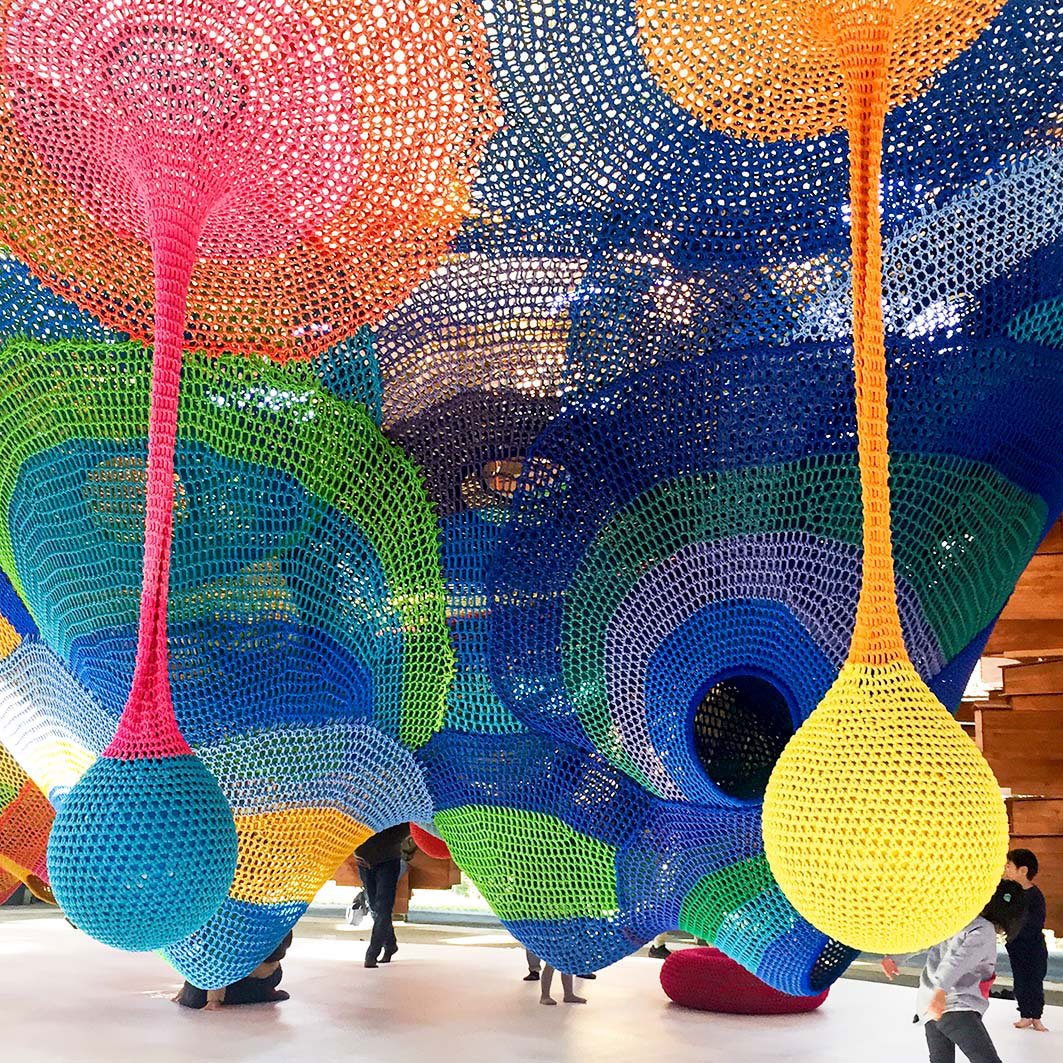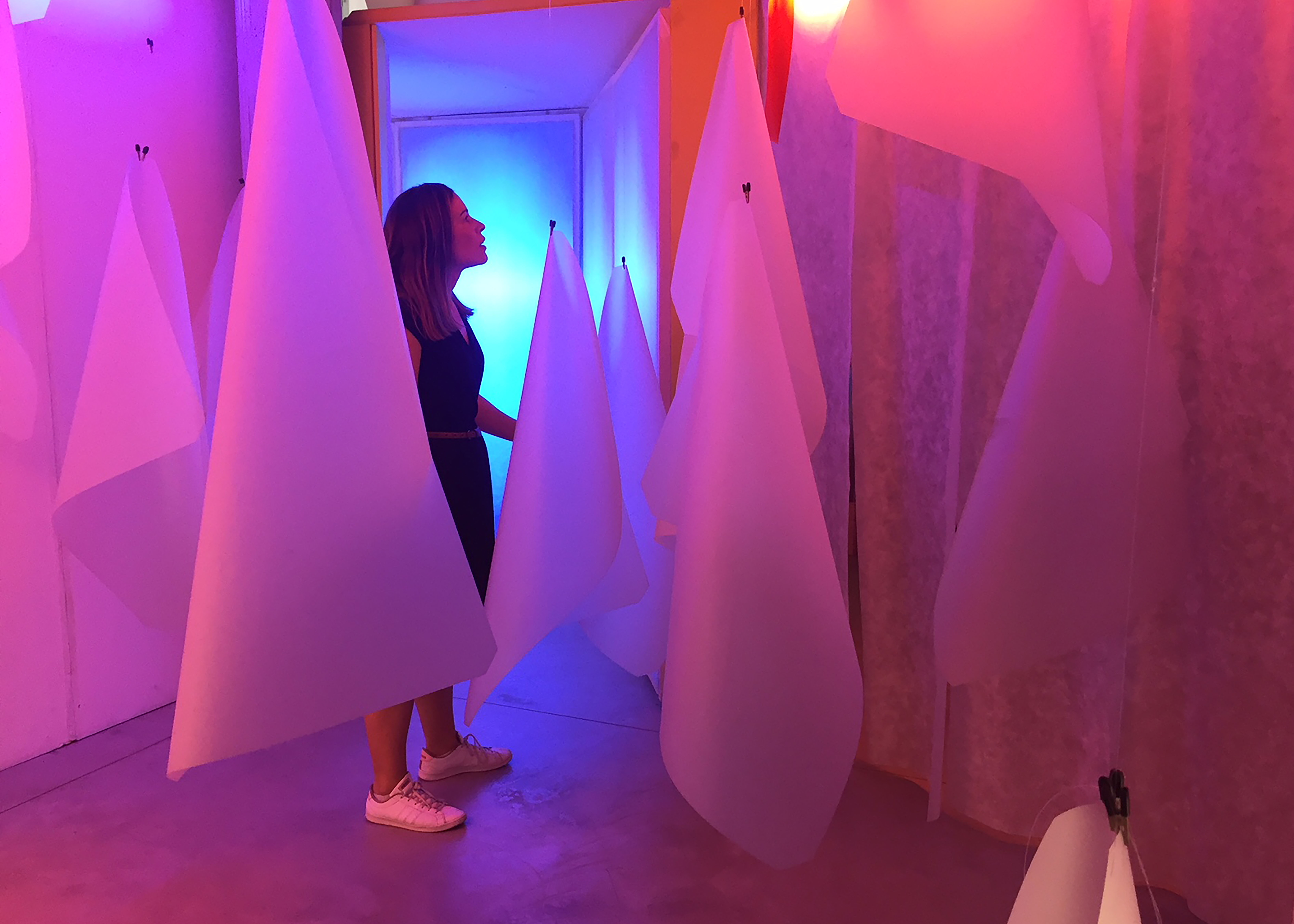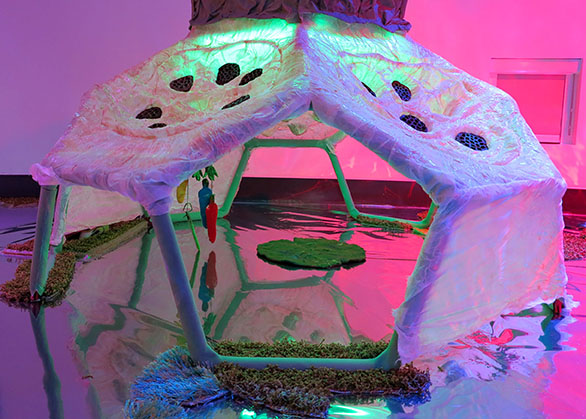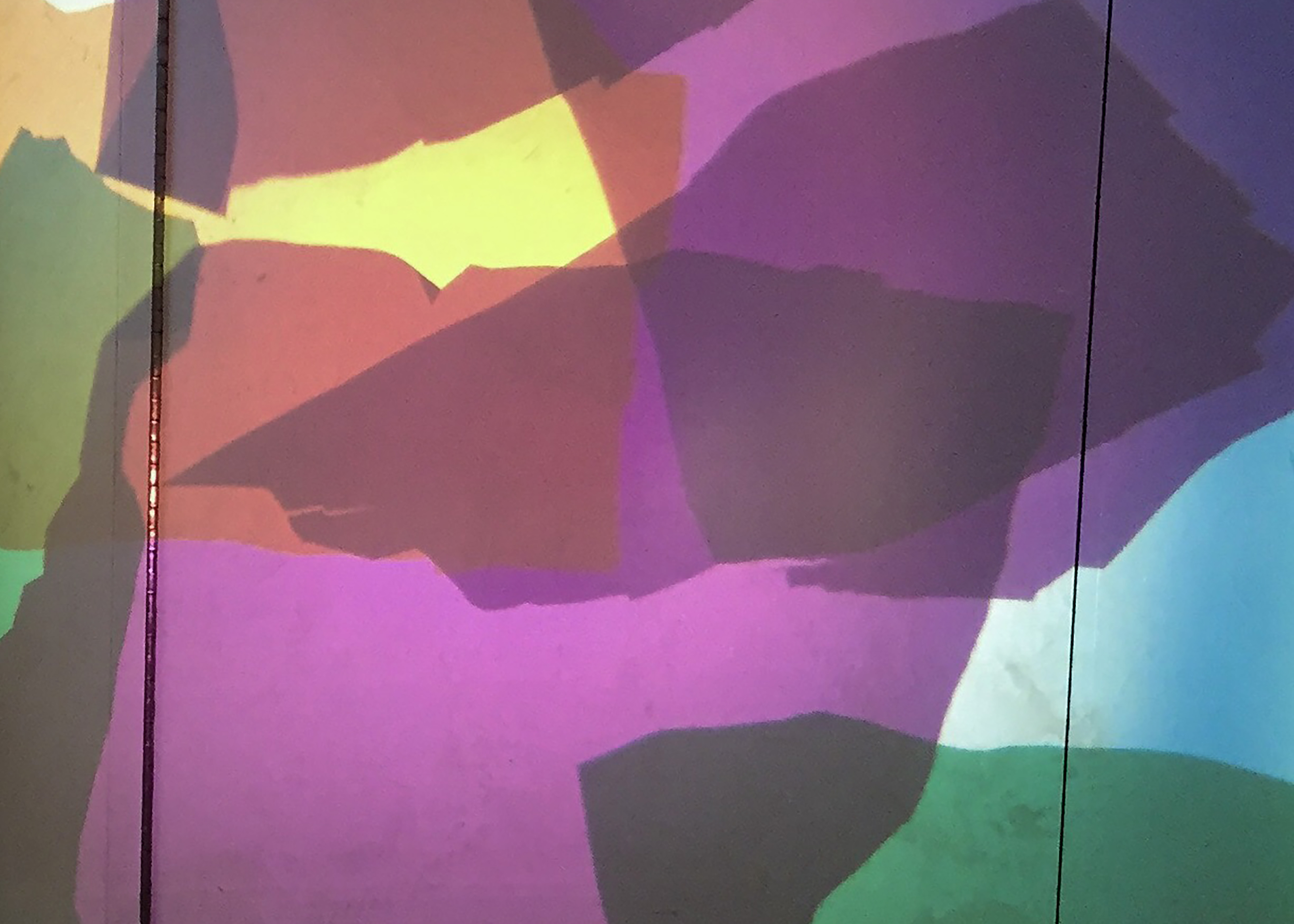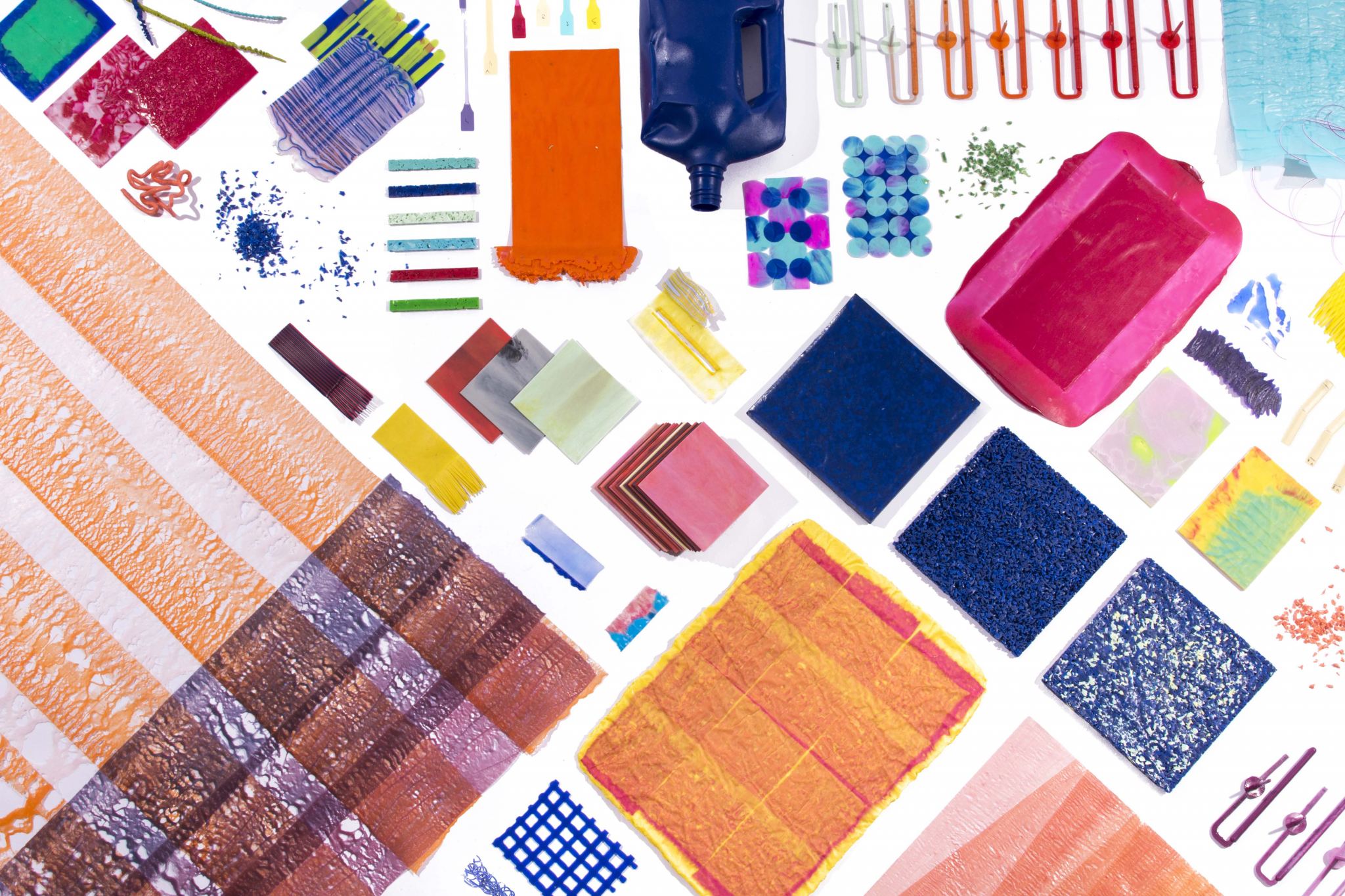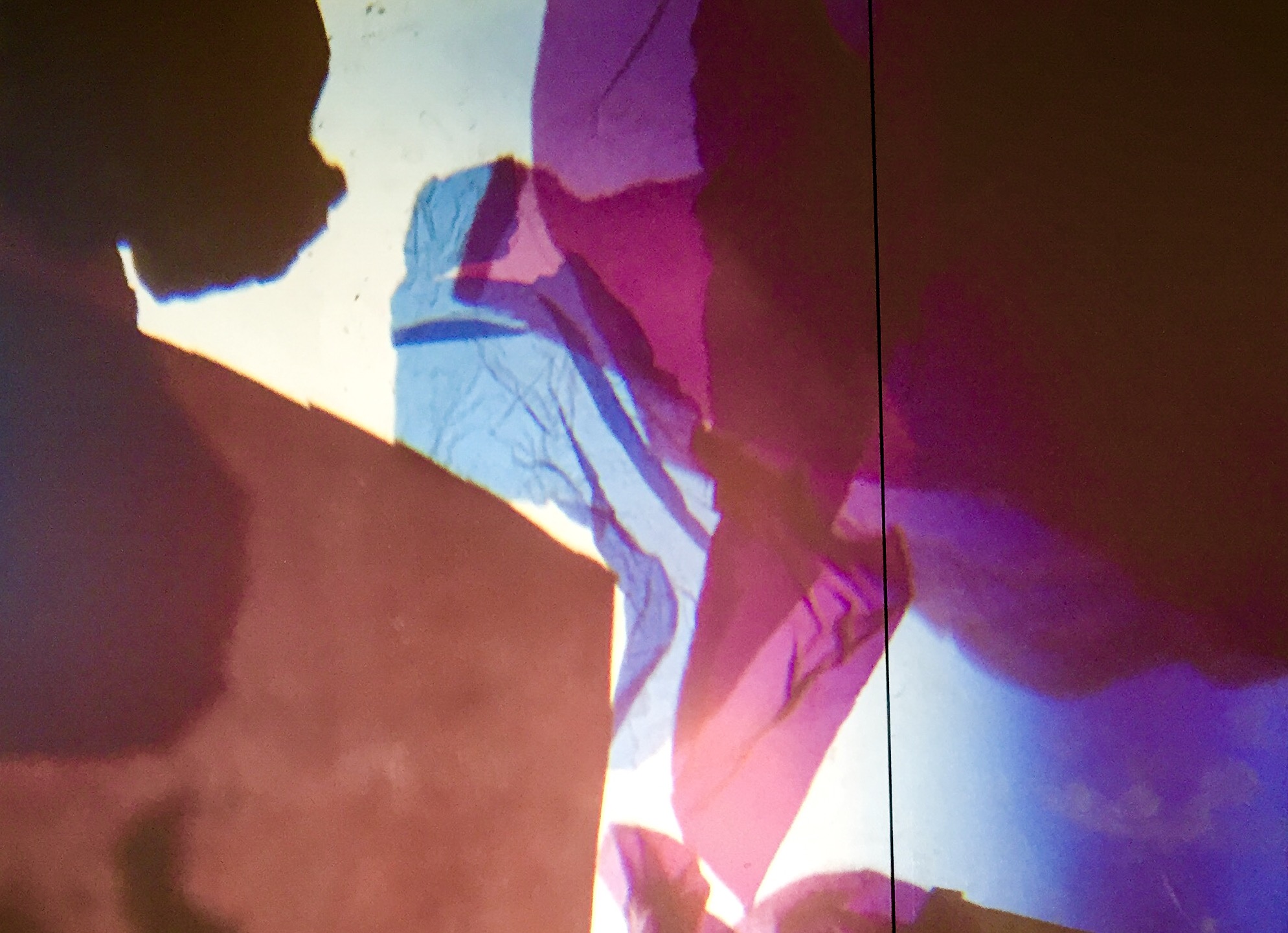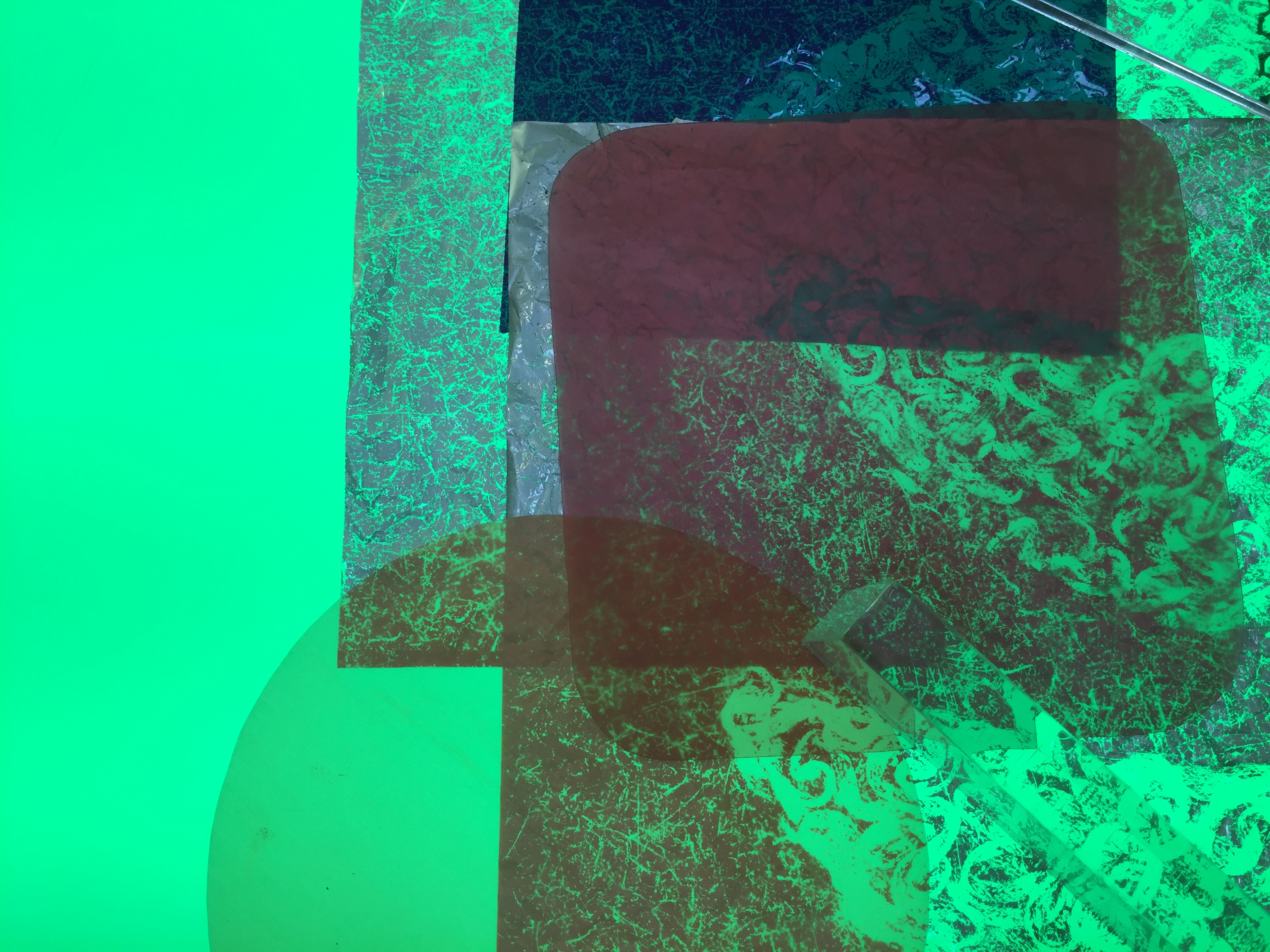Last month I was fortunate enough to visit the Hakone Open Air Museum, an outdoor sculpture park located a couple of hours outside of Tokyo. A highlight of the visit was seeing the wonderful crochet play ‘sculptures’ of the artist Toshiko Horiuchi MacAdam. The artwork, titled ‘Knitted Wonder Space 2,’ is a gigantic textile structure that has the appearance of a net suspended in mid-air. The sculpture has a strong architectural quality to it, creating an immersive and sensory-driven play space for children. Toshiko Horiuchi MacAdam’s crochet play sculpture ‘Knitted Wonder Space 2’ at Hakone Open Air Museum On the afternoon that I visited, there was a tribe of toddlers and elementary-aged kids climbing, jumping, rolling, somersaulting, dangling and swinging their way through it. As the children played in the net, it moved and swayed with them, igniting squeals of delight and even more physical play. Creating the crochet sculpture…
Reggio Emilia’s art studio ‘ateliers’ for children
Earlier this month I was fortunate enough to visit the Loris Malaguzzi centre in Reggio Emilia. I was interested in learning more about the early childhood philosophy’s approach to children’s creativity, art and learning with materials. This post shares key ideas around the role of the ‘atelier’ in the Reggio Emilia approach. I also discuss my reflections on the Ray of Light atelier space at the centre. “Tools and materials make it possible for children to have experiences in which their thinking takes on different forms” (Dahlberg & Moss, 2010) The Atelier – a space for children’s creative experimentation Educators from Reggio Emilia often talk about the unpredictable nature of learning in which knowledge is formed through unexpected relationships and new connections. This understanding challenges the idea that education is a linear process of development. In Reggio Emilia preschools, the atelier is a creative studio for young children’s imagination, expression and experimentation that…
The magic of materials in children’s theatre design
This post looks at the magic of materials in children’s theatre design. I interview scenographer and researcher Roma Patel whose theatre installation, The Enchanted Forest was recently presented as part of the Techtopia festival at Polka Theatre (London, UK) and at the Theatre Hullaballoo (Darlington, UK). The installation embedded a myriad of interactive digital technologies into its set design. In this interview, Roma discusses some of the key ideas behind The Enchanted Forest, including the importance of children’s sensory-rich experiences in the performing arts. “Any sufficiently advanced technology is indistinguishable from magic.” Arthur C. Clarke Louisa Penfold: Thank you so much for taking the time to talk about your work. What are some of the key ideas that influenced the design of The Enchanted Forest? Roma Patel: There were a few key things I was thinking about when designing The Enchanted Forest installation. I wanted to create something that would encourage a…
How to arrange materials to support children’s learning
Children’s play with sensory-rich, loose part materials can be an important part in creative learning. How these materials are spatially arranged may also dramatically influence how a child takes up and explores them. Below are three practical tips for arranging materials to support children’s imagination and curiosity. I have put these together based on my own experience working as an artist and educator with young children. It would be great to hear what others find useful when laying out materials for children so please comment below! Layout materials to encourage social interactions Vygotsky talks about the importance of social interactions in facilitating learning amongst groups of people (Vygotsky, 1980). As a child’s peers, teacher or parents may have more advanced understandings or abilities in relation to a particular skill, concept or task, a child’s interactions with them may allow for new knowledge to be produced. Social interactions between groups of people may…
Jessica den Hartog’s art made from recycled plastic
The use of plastic in classrooms is becoming an important issue for teachers. For example, public schools in the United Kingdom have been encouraged to eliminate single-use plastics (like straws, disposable water bottles and glitter) by the end of 2022. However, plastic can also be a wonderful material for artistic experimentation, as Dutch designer Jessica den Hartog shares with us in this post. Jessica is a researcher and designer whose artistic practice has explored the relationship between colour and recycled plastic. Based in Maastricht in the Netherlands, her art focuses on the importance of experimentation with the material. This is in contrast to making a specific end product. Image: Jessica in her art studio. Credit:Jessica den Hartog Louisa Penfold: I understand you have worked in both styling and design. Can you tell us about your background and how your interest in recycled plastic came about? Jessica den Hartog: My interest…
4 organisations exploring materials in innovative ways
This is a follow up to my recent post on the role of materials in children’s learning through art. If you have not read this already, I recommend checking it out before reading on. Here I present four different organisations – a university research centre, a design consultancy, a creative recycle centre and a children’s art studio – who are all exploring materiality in new and experimental ways. I selected these organisations as I am interested in thinking about how materials are being researched and considered in a collective way, among groups of people with diverse interests, skills and expertise. MIT Media Lab: Mediating Matter group (USA) I am a massive fan girl of the MIT Media Lab. For those of you who are not unfamiliar with this university research centre, it is an interdisciplinary lab ‘that encourages the unconventional mixing and matching of seemingly disparate research areas’ (MIT website, 2018).…
What is the role of materials in children’s learning through art?
This post discusses the possibilities of materials and material play in children’s learning through art. I draw on the theories of loose parts and new materialism to argue that materials play an active and participatory role in opening-up children’s divergent thinking and inquiry-led learning. Why do materials matter? Materials and material exploration have long been a part of artistic inquiry. Since Frobel’s development of the kindergarten in the late 1700’s, they have also held an important place in early childhood settings. In the 1970’s Simon Nicholson presented the theory of loose parts – the proposition that young children’s creative empowerment comes from the presence of open-ended materials that can be constructed, manipulated and transformed through self-directed play. It is fair to say that material content, including artworks and art materials, hold tremendous possibilities for facilitating children’s inquiry-led learning in new and divergent ways. I consider materials to be one of multiple…
3 tips for scaffolding children’s play with materials
Children’s play with materials is important as it allows them to think and learn in different ways. As a child’s creativity is always limited by what they do and do not know, scaffolding can open up new opportunities for more complex learning over time. Scaffolding is a term that was first coined by Vygotsky (1978) who described the process as something that allows children to move their current level of understandings to a more advanced one. This process helps children to undertake activities that they usually would not be able to without the help of others. Teachers and parents often do a lot of scaffolding in children’s lives. They teach children how to brush their teeth, share with others and read. Children’s peers, technology and information resource like a YouTube video can also scaffold children’s learning in different ways. Scaffolding is important in children’s play with materials as it allows…
3 books on documenting children’s learning
Documenting children’s learning is a brilliant way to make creative and critical thinking processes visible. Documenting is also a great way to debate the assumptions, ethics and politics that shape education practices. This process can then be used to deepen and complexify education practices towards children (Krechevsky et al. 2013). Different terms are used to describe the process of documenting children’s learning around the world (Pacini-Ketabaw et al., 2015). For example, in England, the process is often referred to as ‘learning journeys,’ in Italy and parts of Scandinavia it is ‘pedagogical documentation’ and in Canada ‘pedagogical narration.’ It makes sense that different terms have been created as documenting children’s learning varies significantly in different contexts. Below are three of my favourite books on documenting children’s learning. Each book has been written in a different country (America/Italy, Canada and Sweden) and generates diverse theoretical and practical perspectives on the topic. I hope…


